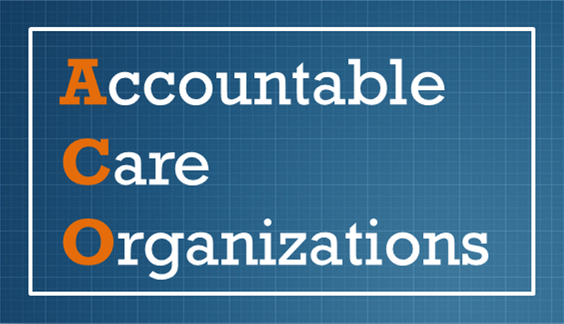CMS Announced 121 New Accountable Care Organizations
The Next Generation ACO Model consists of a more developed accountable care organization that uses both the Pioneer ACO model and the Medicare Shared Savings Program as its building blocks.

- On Monday, the Centers for Medicare & Medicaid Services (CMS) revealed that there will be 121 new accountable care organizations joining the ranks of Medicare ACOs and the Shared Savings Program.

A press release from the Department of Health and Human Services (HHS) shares that the ACO model is now going to be implemented across 49 states and the District of Columbia. Accountable care organizations were developed in order to move the nation away from quantity of healthcare services within the fee-for-service model to a more quality-based reward system that focuses more on population health, care coordination and disease prevention.
“Americans will get better care and we will spend our healthcare dollars more wisely because these hospitals and providers have made a commitment to change how they do business and work with patients,” HHS Secretary Sylvia M. Burwell said in a public statement.
“We are moving Medicare and the entire healthcare system toward paying providers based on the quality, rather than the quantity of care they give patients. The three new ACO initiatives being launched today mark an important step forward in this effort.”
In the past, many patients have encountered a healthcare delivery system that moved them across hospitals and various specialists with the likelihood of duplicative testing. The accountable care movement, however, is focused on greater coordination and communication between primary care doctors, specialists, clinicians, nursing staff, and health payers.
How ACOs bring cost savings
 Accountable care organizations team up doctors and hospitals to put patients in the center of their care delivery and share vital information about patients’ health between offices and departments. Most importantly, accountable care organizations are reimbursed based on the outcomes and success of the administered treatment instead of for every service rendered like in the fee-for-service model.
Accountable care organizations team up doctors and hospitals to put patients in the center of their care delivery and share vital information about patients’ health between offices and departments. Most importantly, accountable care organizations are reimbursed based on the outcomes and success of the administered treatment instead of for every service rendered like in the fee-for-service model.
The ACO model is showing some cost savings for the Medicare program. For instance, in 2014, 333 Medicare Shared Savings Program ACOs and 20 Pioneer ACOs garnered a total net savings of $411 million.
Additionally, CMS announced that hospitals and providers have begun participating in new types of ACOs, which provide penalties for negative patient outcomes while also being paid for positive outcomes. Through the range of new ACO programs available, nearly 9 million beneficiaries will be cared for.
Currently, there are 64 ACOs on a risk-bearing track, which includes the Pioneer ACO model. The Next Generation ACO Model consists of a more developed accountable care organization that uses both the Pioneer ACO model and the Medicare Shared Savings Program as its building blocks. There are currently 21 Next Generation ACO Models that can be found around the country serving a population of beneficiaries.
“Accountable Care Organizations are improving quality of care and spending dollars more wisely. These new initiatives place patients at the center of a coordinated care delivery system and give providers the tools to achieve better outcomes,” Patrick Conway, Deputy Administrator for Innovation and Quality and Chief Medical Officer for CMS, stated in the press release.
The importance of information technology
 In order to continue to strengthen accountable care organizations, information exchange and coordination is key. As such, health information technology will continue to be a necessary part of any ACO model.
In order to continue to strengthen accountable care organizations, information exchange and coordination is key. As such, health information technology will continue to be a necessary part of any ACO model.
CMS is investing in information technology within the ACO model and the Medicare Shared Savings Program along with the Medicaid program, according to The CMS Blog. In particular, it is vital to invest in the Medicaid program’s future in order to strengthen the healthcare field as a whole.
Currently, CMS is spending $5 billion in state Medicaid IT systems. Real advances are being promised across the country for Medicaid beneficiaries due to the growth of the health IT space. CMS is pushing toward new regulations that stress reusability of information technology systems.
The organization is also looking to bring financial incentives away from tailored solutions and more toward solutions that can be used among multiple facilities and across states. CMS is going to start issuing guidance documents for individual states and creating a certification method for Medicaid system modules.
With Medicaid and the Children’s Health Insurance Program (CHIP) offering medical coverage plans to nearly 72 million Americans, it grows more important than ever before to institute superior health IT systems in order to manage the multitude of beneficiaries and medical concerns.
“With over 30 states currently redesigning their Medicaid eligibility and/or claims processing and information retrieval systems, 2016 will the most active year to date for Medicaid growth and new IT business prospects. CMS and states want to make the most of this opportunity,” the CMS website states.
“The Medicaid program is undergoing tremendous change, such as a growing emphasis on managed care, offering home and community-based services to seniors and people with disabilities, and developing new models of delivery system reform to improve health outcomes while controlling costs.”
“State Medicaid agencies are hungry for innovation and have pioneered new IT adoption. They were early adopters of Health Information Technology and have issued more than $10.2 billion in incentive payments to providers for adopted and meaningfully used electronic health records.”
Whether building health payer administration systems, improving data sharing within accountable care organizations, or strengthening the Medicaid reimbursement program, health IT tools are a major part of ensuring a more coordinated and well-functioning healthcare industry.
